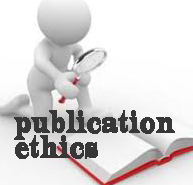THE EFFECT OF GIVING FERMENTED SAGO DRAIN IN THE RATION ON THE QUALITY OF PEKING DUCK CARCASSES
Abstract
Ducks are one of the sources of high-quality animal protein, receiving attention in meeting human consumption needs. However, the cultivation of Peking ducks, which have great potential as meat producers, is still carried out extensively and has not been optimal in Indonesia. This study aims to investigate the effect of fermented sago pulp in rations on the quality of carcasses and abdominal fat of Peking ducks. The research method involved the provision of fermented sago pulp in Peking duck rations, with a focus on evaluating the quality of carcasses and abdominal fat. Peking ducks. This study used an experimental method while the design used was a completely randomized design (CRD) with 4 treatments and 3 replications so that there were 12 experimental units. The results showed that the provision of fermented sago pulp in rations showed a significant impact on live weight, carcass weight, carcass percentage, and abdominal fat of Peking ducks. Based on ANOVA analysis and DMRT test, the provision of fermented sago pulp increased all of these parameters at a significance level of P <0.01. Treatment D with 100% fermented sago dregs produced the highest live weight of 1.29 kg and the highest carcass weight of 576.11 gr, significantly different from other treatments.
Keywords
Full Text:
PDFReferences
Adrian, 2016. Raising Peking Ducks. Click Publishing Yogyakarta, Yogyakarta
Adriani et al, 2016. Animal Physiology. Widya Padjajaran, Bandung.
Adzitey and Adzitey, 2018. Duck production: has the potential to reduce poverty among rural households in Asian communities – a review. Journal of World's Poultry Resources. 1: 7-10.
Agriflo, 2018. Peking duck. Retrieved fromhttp://eprints.undip.ac.idaccessed on June 24, 2023.
Ali and Febrianti, 2019. Performance of Meat Ducks (local x peking) Starter Phase at different cage density levels in Laboi Jaya Village, Kampar Regency. Animal Husbandry Journal Vol 6 No 1
Andira, 2017. Performance of Kamang Duck Egg Production Raised Intensively in the Aur Mekar Women Farmers Group, Tilatang Kamang District, Agam Regency. Diploma thesis, Andalas University.
Andoko and Sartono, 2013. Breeding Meat Ducks. PT. Agromedia Pustaka.
Avian et al, 2016. Agribusiness-based Agricultural Business System. Livestock. Duck Livestock. Center for Animal Husbandry Research and Development.
Basya, 2017. Percentage of carcass weight, abdominal fat and internal organs of broiler chickens fed with single cell protein. Thesis. Faculty of Animal Husbandry, Bogor Agricultural University, Bogor.
Chilton, S.N., J.P. Burton and G. Reid. 2015. Inclusion of Fermented Foods in Food Guides around the World. Nutrients 7: 390-404. doi:10.3390/nu7010390
Chuzaemi, 2017. Effect of fermentation time of pineapple waste (Ananas comosus L. Merr) on physical quality and nutrient content using Aspergillus Niger. Journal of Tropical Animal Nutrition.
Daud et al., 2016. Evaluation of production and percentage of peking duck carcass with probiotic fermented feed. J. IImiah Mahasiswa Pertanian Unsyiah. 1:719- 730.
Directorate General of Breeding, Directorate General of Animal Husbandry and Animal Health. 2012. Local Breeding Roadmap, Jakarta.
Fadilah et al., 2017. Key to Poultry Farming. Agromedia Pustaka, Jakarta.
Fitriani, L., et al. 2016. "Reduction of Anti-Nutritional Factors in Fermented Sago Waste for Poultry Feed. Journal of Agricultural Science and Technology.
Frasiska et al., 2013. Effect of Combination of Azolla microphylla with Lemna Polyrrhiza and Protein Level on Body Weight and Growth Rate of Peking Ducks Up to 8 Weeks of Age. Scientific Journal of Animal Husbandry 1(2): 654-660.
Haryanto, B., Sutrisno, B., & Arief, II 2018. Effect of Conventional Feed Substitution with Fermented Sago Dregs on Local Duck Carcass Weight. Journal of Food Technology and Industry, 29(1), 47-53.
Herdiana, RM, Y. Marchal., R. Dewanti and Sudiyono. 2014. Effect of soy sauce dregs on daily weight gain, feed conversion, protein efficiency ratio and carcass production of eight-week-old male local ducks. Animal Husbandry Bulletin 38 (3): 157 – 156.
Kushartono, 2018. Corn Silage as. Development of Animal Feed Sources. In: Proceedings of the National Technical Meeting of Functional Personnel
Laboratory of Nutrition and Chemistry, UIN Suska Riau, 2014. Results of Sago Pulp Fiber Praxis Analysis. Faculty of Agriculture and Animal Husbandry, UIN Suska Riau, Pekanbaru.
Liu et al., 2015. Effect of Monochromatic Light on Expression of Estrogen Receptor (ER) and Progesterone Receptor (PR) in Ovarian Follicles of Chicken. Plos One 10:1-14.
Mahata, ME, et al. 2016. Effect of Fermentation on Nutritional Content of Sago Waste. Indonesian Journal of Animal Science.
Mahfudz, LD, et al. 2014. Utilization of Fermented Sago Waste in Poultry Feed. Indonesian Journal of Animal Science.
Muhsafaat, LO, HA Sukria and Suryahadi, 2015. Protein Quality and Amino Acid Composition of Aspergillus neger Fermentation Results. With the Addition of Urea and Zeolite, Indonesian Journal of Agricultural Sciences (JIPI), 20(2):123-130.
Muliani, H. 2014. Cholesterol Levels of Meat of Various Types of Ducks (Anas domesticus) in Semarang Regency. Journal of Anatomy and Physiology Bulletin. Vol. XXII. No. 2: 75-82.
Munawar et al, 2019. Animal Husbandry and Animal Health Statistics. Directorate General of Animal Husbandry and Animal Health, Ministry of Agriculture.
Mustaqim. M, Saifannur. S, Rusydi. R. 2020. Utilization of Fermented Cocoa Husk as Raw Material for Tilapia Gift Fish Feed (Oreochromis niloticus). Jurnal Fanik. Vol. 1. No. 1. 23 - 27
Mustaqim. M. and Zulkifli. Z. 2022. Use of Fermented Cocoa Skin as Raw Material for Carp Feed (Cyprinus carpio). SEAS. Vol. 06. No. 02. 88 93.
Mustaqim.M, Zulkifli. Z, Jannah. CR, Salsabila. 2023. Quality of Arabian Chicken Semen Given Fermented Feed in the Form of Indigefera sp Leaves and Eurycoma longifolia. Journal of Animal Science. Vol. 07. No. 2. 30 – 35.
Mustari, 2014. Poultry Feed Production. CV. Amissco, Jakarta.
Nuraini, 2016. Analysis of Income and Economic Efficiency in Two Duck Farming Groups (KTTI) in Brebes Regency. BAAR, 3(2), 41±46.https://www.ejournal.unper.ac.id/index.php/
Nurhayati, 2018. Restructuring of Poultry Production System in Indonesia. Center for Animal Husbandry Research and Development. Agricultural Research and Development Agency. Bogor.
Oktaviana, 2018. Population Structure of Local Ducks in Ranah Pesisir District, Pesisir Selatan Regency. Research Report. Faculty of Animal Husbandry. Andalas University.
Prasetyo, LH, et al. 2014. Utilization of Fermented Sago Waste for Poultry Feed. Indonesian Journal of Animal Science.
Prasetyo, T., Putra, AA, & Rachman, MA 2021. Feeding with Fermented Sago Pulp Content on Production Performance and Carcass Quality of Broiler Chickens. Journal of Animal Science, 34(4), 215-222.
Rahayu et al., 2016. Complete Poultry Guide. Spreader. Swadaya, Jakarta
Rahman, MS, Nasution, MA, & Tanjung, SA 2019. Use of Fermented Sago Pulp as an Alternative Feed Ingredient for Meat Ducks: Effects on Carcass Weight and Meat Quality. Journal of Agribusiness and Animal Husbandry, 14(2), 129-138.
Resnawati, 2014. Presentation material for KUB Chicken Feed. Animal Research Center. Bogor.
Retnani, 2015. Feed Industry Process. Bogor: IPB Press.
Salam, S., A. Fatahilah., D. Sunarti and Isroli. 2013. Carcass weight and abdominal fat of broilers fed with black cumin (Nigella sativa) flour in rations during summer. Journal of Animal Science, 11 (2): 84-89.
Sangadji, I., Jurianto and M. Rijal. 2019. Storage Time of Broiler Chicken Meat on Its Quality Reviewed from Protein Content and Total Bacterial Plate Count. Journal of Biology Science and Education, 8(1): 47-58.
Sari, RP, et al. 2018. Probiotic Effect of Fermented Feed on Poultry Digestive Health.
Simanihuruk et al., 2018. Sago Dregs Silage as Basic Feed for Growing Kacang Goats. National Seminar on Animal Husbandry and Veterinary Technology. Research Center for Beef Goats, North Sumatra.
Sinurat, 2018. Use of Local Feed Ingredients in Making Native Chicken Rations. Wartazoa Journal Vol 9. No. 1 Year 2018. Center for Animal Husbandry Research and Development. Bogor.
Indonesian National Standard, 2006. Laying Duck Rations. National Standardization Agency, Jakarta.
Subekti, K., H. Abbas and KA Zura. 2018. Carcass quality (carcass weight, carcass percentage, and abdominal fat) of broiler chickens given a combination of CPO (crude palm oil) and vitamin C (ascorbic acid) in the ration as an anti-stress. Indonesian Journal of Animal Husbandry 14 (3): 447 – 453.
Sudarman, 2018. Village Chicken Farming Business. Ciawi Livestock Research Center. Bogor.
Sugiharto, S., et al. 2014. Fermented Products as Feed Additives in Poultry Nutrition. World's Poultry Science Journal.
Sukirmansyah, M. Daud, and H. Latif. 2016. Evaluation of production and percentage of peking duck carcass with probiotic fermented feed. J. IImiah Agricultural Students Unsyiah. 1:719- 730.
Sukria and Krisnan, 2019. Sources and Availability of Feed Raw Materials in Indonesia. IPB Press. Bogor. Pg. 10.
Sunarno and Setiawan, 2020. Duck Farming in Battery Cages. Spreader. Swadaya, Jakarta.
Suprijatna et al., 2018. Basic science of poultry farming. 2nd ed. Swadaya disseminator. Jakarta.
Suryani, T., et al. 2015. Nutrient Improvement of Fermented Sago Pulp for Animal Feed. Tropical Animal Science Journal.
Susanti et al., 2018. Identification and Problem Solving of Cattle Feed Provision in Supporting Community Livestock Business in South Sumatra. Proceedings. National Seminar on Sustainable Livestock. Livestock Agribusiness Innovation for Food Security. Faculty of Animal Husbandry, Padjadjaran University, Bandung. p:127-132.
The use of various levels of crude fiber in the ration of growing male ducks. Journal of Applied Agricultural Research. Vol 11 (3)
Sylvia Ch. H. Hehanussa, Tabita N. Ralahalu, Christine CE Latupeirissa, 2018. Production Performance and Carcass Quality of Ducks Given Rations Containing Sago Pulp.Vol 7 No 1 (2018): Agritekno, Journal of Agricultural Technology
Umiyasih and Yenny, 2017. Technical Instructions for Balanced Rations. Center for Animal Husbandry Research and Development, Pasuruan.
Wakhid, 2013. Duck Farming. PT. Agromedia Pustaka. Jakarta.
Widjastuti, T., et al. 2014. Economic and Performance Benefits of Using Fermented Feed in Poultry Diets. Indonesian Journal of Animal Science.
Widodo, S., Pramono, YB, & Lestari, DA 2016. Effect of Fermented Sago Pulp on Growth and Feed Efficiency of Broiler Chickens. Indonesian Journal of Animal Husbandry, 21(2), 95-102.
Yusuf, AM, et al. 2017. Effects of Fermented Sago Pulp on Nutrient Digestibility in Broilers. Journal of Animal Nutrition.
Zainuddin, 2014. Ration Preparation Techniques and Nutritional Needs of Chickens. Local. Training Materials for Local Chicken and Duck Cultivation Technology. Cooperation with the Animal Husbandry Service
DOI: https://doi.org/10.24114/jbio.v10i3.63881
Article Metrics
Abstract view : 51 timesPDF - 30 times
Refbacks
- There are currently no refbacks.

This work is licensed under a Creative Commons Attribution 4.0 International License.
INDEXING
JBIO : Jurnal Biosains (The Journal of Biosciences), Program Studi Biologi, Fakultas Matematika dan Ilmu Pengetahuan Alam, Universitas Negeri Medan. ISSN 2443-1230 (print) dan ISSN 2460-6804 (online)

Ciptaan disebarluaskan di bawah Lisensi Creative Commons Atribusi 4.0 Internasional.


.png)






